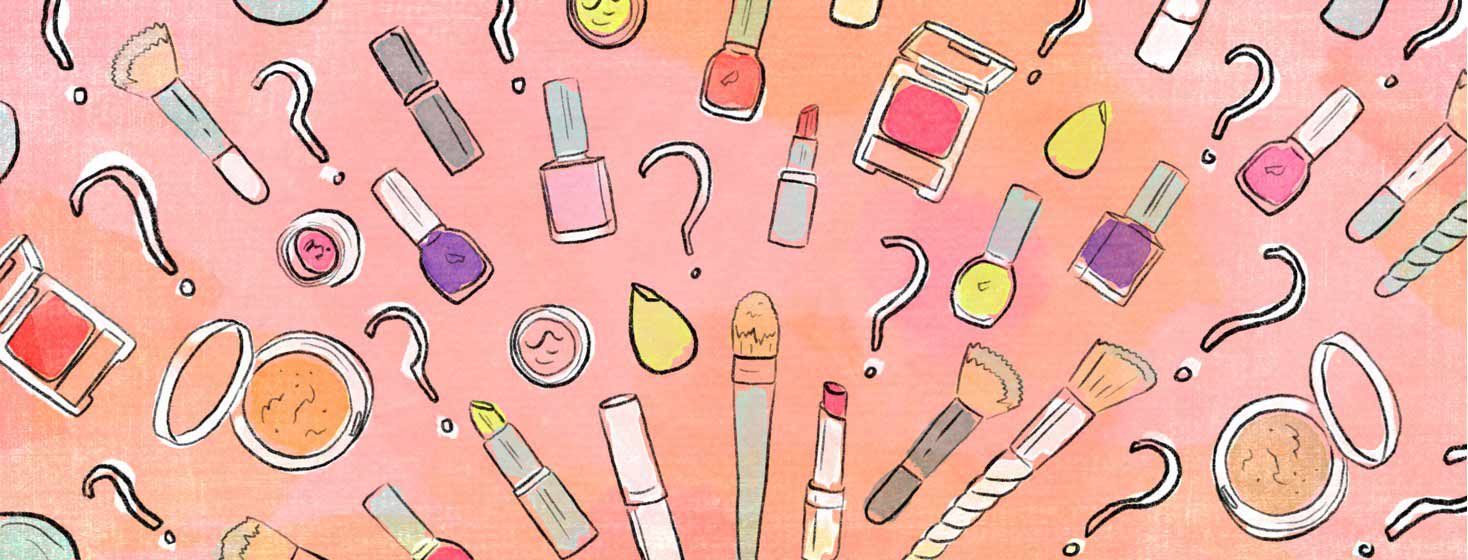What Are Common Allergens in Cosmetic Products?
Cosmetics are products applied to your body to make it cleaner or more appealing, or change its appearance. They include things like hair dyes, makeup, and perfumes. Cosmetics can sometimes cause an allergic reaction, resulting in discolored and irritated skin.
Here is a closer look at which cosmetics ingredients are more likely to trigger a skin allergy:
Fragrances
As many as 4 percent of us are sensitive to fragrances. That number jumps to 8 to 15 percent of people with contact dermatitis.1,2
In the United States, cosmetic labels are not required to list specific fragrance ingredients, only the term “fragrance.” But the European Commission has researched fragrance allergens. It has a list of 26 ingredients allergens on its website.1,2
Some cosmetics and personal care products use fragrances to mask other ingredients that smell bad. These masking fragrances can include herbal ingredients or botanical oils. They may be listed as rose oil, vanilla, or sweet almond oil. Companies may market these products as “unscented” or “fragrance-free.” But they could still have allergens.1,2
Preservatives
Some people with skin conditions may be allergic to ingredients used to preserve cosmetics:
Formaldehyde
Companies frequently use this chemical in cosmetic products such as:2,3
- Fingernail polish and hardener
- Antiperspirant
- Makeup
- Bubble bath
- Bath oil
- Shampoo
- Cream
- Deodorant
Formaldehyde may be listed on cosmetic product labels as:2,3
- Bronopol (2-bromo-2-nitropropane-1,3-diol)
- Bronidox (5-bromo-5-nitro-1,3-dioxane)
- Diazolidinyl urea
- DMDM hydantoin (1,3-dimethylol-5,5-dimethylhydantoin)
- Imidazolidinyl urea
- Sodium hydroxymethylglycinate (SHMG)
- Quaternium-15 (Dowicil 200, N-(3-chloroallyl) hexaminium chloride)
Isothiazolinone (commercial name Kathon™) and methylisothiazolinone (MI)
You will find these ingredients in products like:4,5
- Foundation and concealer
- Bronzer and self-tanner
- Eyeshadow
- Mascara
- Makeup remover
- Moisturizer
Metals
Metals are another ingredient in cosmetics that can trigger a flare. This is especially true for people with eczema. Be sure to check your cosmetic label for metals like nickel and gold.2,3
Dyes
Dyes, dye chemicals, and added color ingredients like those used in hair dye and black henna tattoos may irritate your skin. They are listed as p-phenylenediamine (PPD) or coal tar on product labels.2
Latex
Plant proteins (called antigenic proteins) found in natural rubber latex can trigger an allergic reaction. Around 1 to 6 percent of people are allergic to latex. You will usually find it in these cosmetic products:
- Hair bonding glue
- Face and body paint
- Eyeliner
- Eyelash glue
The US Food and Drug Administration (FDA) does not require cosmetic companies to warn consumers about latex in their products. But a product’s label will still offer clues as to whether it contains latex. Look out for these names on the label:6
- Natural rubber Latex
- Natural latex rubber
- Rubber latex
- Natural latex
- Latex rubber
- Natural centrifuged latex
- Natural liquid latex
- Aqueous latex adhesive
- Latex
Surfactants
This substance gives products like soap their slip and helps them clean better. If you have sensitive skin, watch out for products made with surfactants like cocamidopropyl betaine. Experts link it to skin irritation and allergic contact dermatitis.7
You could find the ingredient in these products and others such as:8,3
- Shampoo
- Body wash and cleanser
- Liquid hand soap
- Face cleanser
- Conditioner
- Scrubs
- Bubble bath
- Baby shampoo
- Hair color and bleaching
- Baby soap
- Bar soap
- Mask
- Styling mousse and foam
- Bath oil, salts, and soaks

Join the conversation